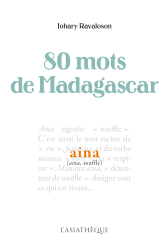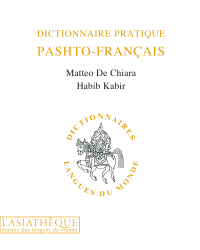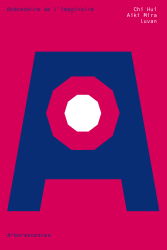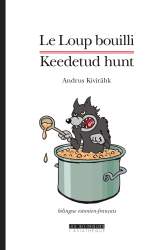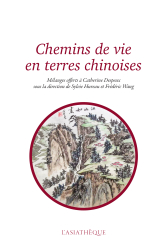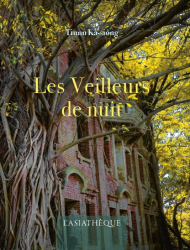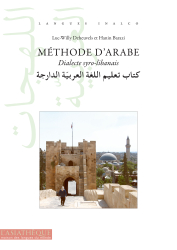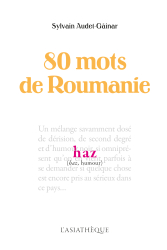Details
Format: Paperback
ISBN: 9782915255331
Collection: Les bilingues
12.5 x 18 cm
Weight: 330 gr
Pages: 336
First publication: 03/01/2006
Last printing: 12/2023
Anonymous
The story of Les contes facétieux du cadavre (The Facetious Tales of the Corpse) is divided into twenty-four episodes which go along with Dechö-sangpo’s efforts to bring the corpse named Ngödrup-chän to his spiritual master. Wishing to return to his cemetery, the corpse knows that if he makes the young man talk he can regain his freedom, and does not cease to tease him with his fascinating stories. Dechö-sangpo, who cannot resist the temptation to comment on each of the stories, must refind Ngögrup-chän twenty-four more times. The public will find this text, translated for the first time, a charming introduction to traditional Tibetan culture.
PRESS REVIEW
Tibetan folk tales
"... Ngodrup-chann an exquisite corpse, and very talkative. Which tells the young Decho Sangpo stories that are sometimes supernatural, sometimes very realistic, in which all the elements of Tibetan culture are mingled ... "
Recueil de contes populaires tibétains
"... Presented in a bilingual version - a rarity - this famous collection in Tibet and translated for the first time into the Western language will satisfy both Tibetans and lovers of foreign languages as well as children and adults for whom literature is also a means of opening up to the diversity of the world ... "
Un plaisir surnaturel...
« ... Ce passionnant cycle de contes populaires tibétains possède nombre de qualités et capte notre attention, dès les premières lignes, ne serait-ce que par le plaisir qu'engendre sa lecture ... »
CONTRIBUTORS' BIOGRAPHIES
Françoise Robin
Françoise Robin, professor of Tibetan language and literature at Inalco, is co-author of Thematic vocabulary of spoken language French-Tibetan and translator of Contes facétieux du corpse, books both published in L'Asiathèque.
TABLE OF CONTENTS
Avant-propos (Foreword)
གླེང་གཞི།
Prologue (Prologue)
༡ སྤུན་ཟླ་ཏུག
I. Les six "frères" (I. The six "brothers")
༢ ཏན་གསལ།
II. Thränsäl (II. Thränsäl)
༣ ཤིང་བཟོ་ཀུན་དགའ།
III. Le menuisier Künga (III. Le menuisier Künga)
༤ གསེར་མོ་མཚོ་དང་དངུལ་མོམཚོ།
IV. Sermotso et Ngülmotso (IV. Sermotso and Ngülmotso)
༥ གསེར་གཡུསྐྱུག་པ།
V. Les vomissures d'or et de turquoise (V. The gold and turquoise vomit)
༦ སོ་ནམ་པ་དང་རྒྱལ་བོ་གཏུམཔོ།
VI. Le paysan et le roi cruel (VI. The peasant and the cruel king)
༧ ཏིན་ལན་འཇལ་བ།
VII. Gratitude (VII. Gratitude)
༨ ཕུ་ནུ་གཉིས།
VIII. Les deux frères (VIII. The two brothers)
༩ ཕྱུག་པོ་ས་ཀུབྱས་པ།
IX. Le riche est un voleur (IX. The rich are thieves)
༡༠ བྱ་ཤུབ་རྒྱལ་བུ།
X. Le prince au plumage (X. The prince with feathers)
༡༡ བུ་དབུལ་པོ་དང་ཀླུའི་བུ་མོ།
XI. l'indigent et la fille du nāga (XI. the destitute and the girl from nāga)
༡༢ འབྲི་ཁྲ་བོས་ན་གཞན་བསྐྱབས་པ།
XII. La dri à robe pommelée sauve le jeune homme (The dri with a spotted coat saves the young man)
༡༣ མོ་སྟོན་ཕག་མགོ།
XIII. Le devin à tête de porc (XIII. The pig headed soothsayer)
༡༤ བུ་མོ་གསེར་སྒྲན།
XIV. Serdrön (XIV. Serdrön)
༡༥ མ་སང་ཡ་རུ་ཁཁྲ།
XV. Masang, Veau-au-mufle-chamarré (XV. Masang, the calf with the colourful nose)
༡༦ འཕོ་བ་གྲོང་འཇུག་སློབ་པ།
XVI. L'apprentissage du transfert de conscience dans un mort (XVI. Learning the transfer of consciousness in death)
༡༧ སྦལ་བ་དང་སྲས་མོ།
XVII. Le grenouillon et la princesse (XVII. The princess and the frog)
༡༨ ཁ་མི་གྲག་པའི་བུ་མོ།
XVIII. La jeune fille silencieuse (XVIII. The silent girl)
༡༩ རྫུན་མི་སྨྲ་བའི་རྟ་རྫི།
XIX. Le palefrenier (XIX. The groom)
༢༠ ཕྱུགས་འཚོ་བའི་བྱིས་པ།
XX. L'enfant gardien de bétail (XX. The child keeper of livestock)
༢༡ རྡོའི་སེང་གེ་ཁསུམ།
XXI. Le lion de pierre à la gueule béante (XXI. The stone lion with a gaping mouth)
༢༢ བདུད་པོ་སྤུན་གསུམ།
XXII. Les trois frères démons (XXII. The three demon brothers)
༢༣ བུ་མོ་སྙིང་འཇིན།
XXIII. La jeune fille qui s'empare du cœur (XXIII. The girl who takes hold of her heart)
༢༤ ལས་ལ་བརརྩོན་པའི་བུ་མོ་གསུམ།
XXIV. Les trois filles travailleuses (XXIV. The three working girls)
Lexique des termes tibétains travailleuses (Glossary of Tibetan working terms)




